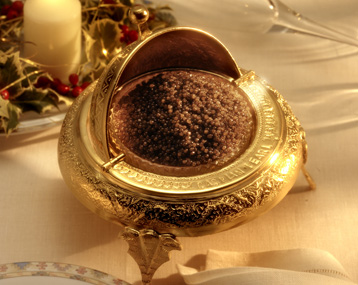


With its 740km Caspian Sea coastline, Iran was (during the initial years of production) the largest caviar producer in the world. Beluga, Asetra (or Ossetra), Sevruga … those are the three types of Iranian caviar which today still delight the palates of connoisseurs and seduce the palates of neophytes.
A royal delicacy.
It was at the end of the 19th Century that Lianazoff (an Armenian-Russian) created the Iranian caviar industry. Profiting from its geography, caviar from the Iranian coasts had a rare and precious quality, which did not leave the Shah indifferent.The Persian Emperor would delight in the Almas caviar - its small balls of white gold as rare as they were luxurious. Initially reserved for an élite of gourmets, caviar slowly became more open. While Russia was, initially, the main consumer of Iranian caviar, this subtle delicacy rapidly found its way onto beds of ice piled high on the greatest tables of Europe and America.Exceptional aquatic environment.
If Iranian caviar has been able to claim the title 'Best in the World', it is certainly because of the unique and exceptional natural environment in which it was gathered. Sturgeons have long been attracted by the quality of the water of the Caspian Sea on the Iranian coasts, with its 900m depths and its cleanliness.
If these grains of black gold are of an extremely rare quality, the reputation of the knowledge of the experts (called « khâviâr sâzân ») exceeds the heights of Mount Damavand. They are today wooed and sought after throughout the world.
Three sorts of Iranian caviar.
There are altogether 24 species of sturgeons. The 3 main species, which produce the world-renowned gastronomic delights, swim on the Iranian coasts :
-Beluga, as rare as it is precious, is viewed as the mildest caviar. Its fine-skinned eggs, with their light to dark-grey colourings, melt in the mouth and leave an exceptionally subtle taste.
- Ossetra: grey-coloured, veering towards golden, Asetra caviar releases a light, delicate taste of hazelnut in the mouth.
- Sevruga: also known as the starry sturgeon, its eggs are amber and grey-coloured, and marked out by its delicate sea-scented flavour which only a real caviar-lover can appreciate (its caviar is also called the caviar of princes).
Devastating over-exploitation.
Well aware of their treasure, caviar producers have been too greedy. Over-exploitation of sturgeons' eggs got the better of the species provoking a collapse in production in this part of the Caspian Sea.
Over 20 years, production has been divided by 100! Today, the number of factories on the Caspian Sea coast increases its pollution and imperils the production of caviar, already greatly weakened by poaching.